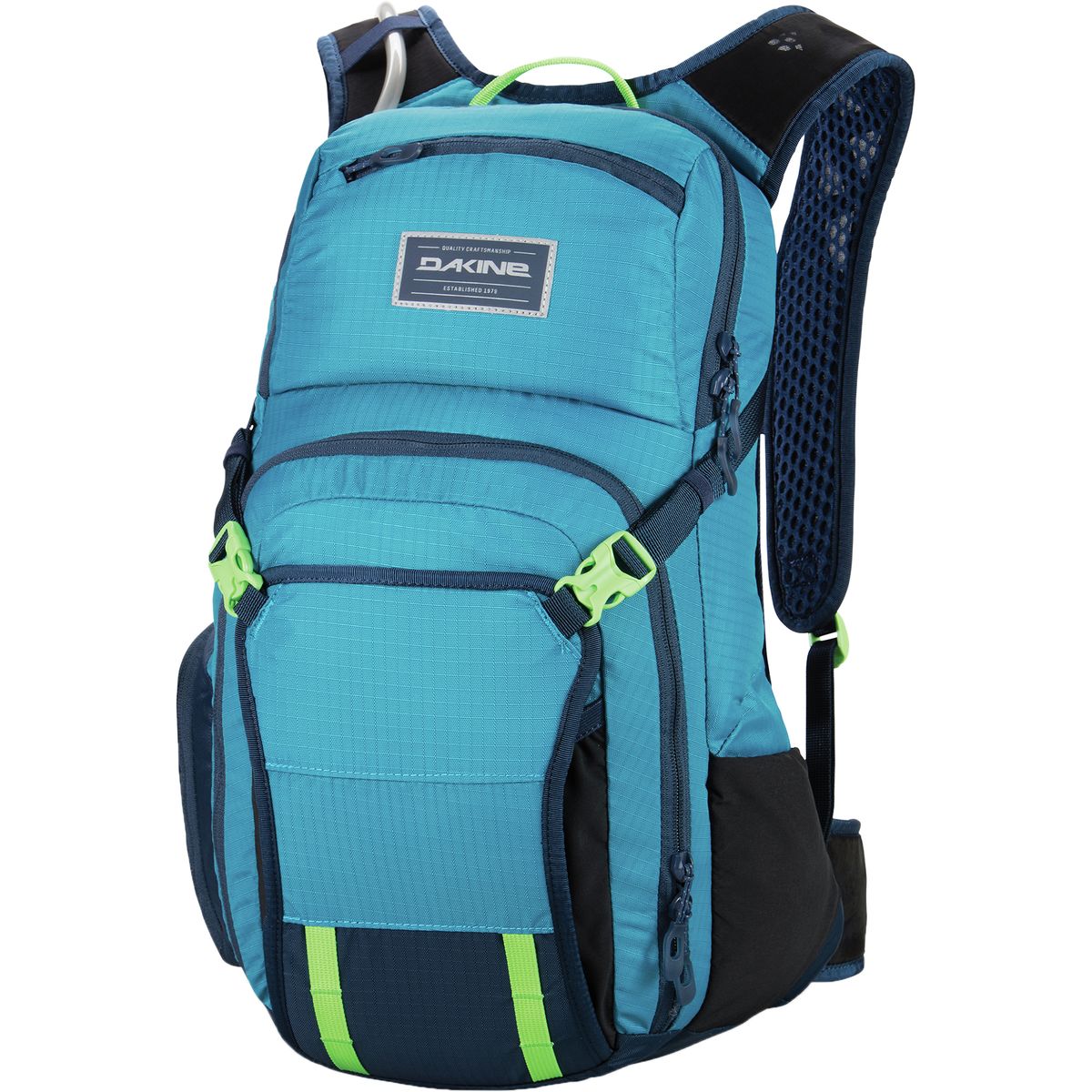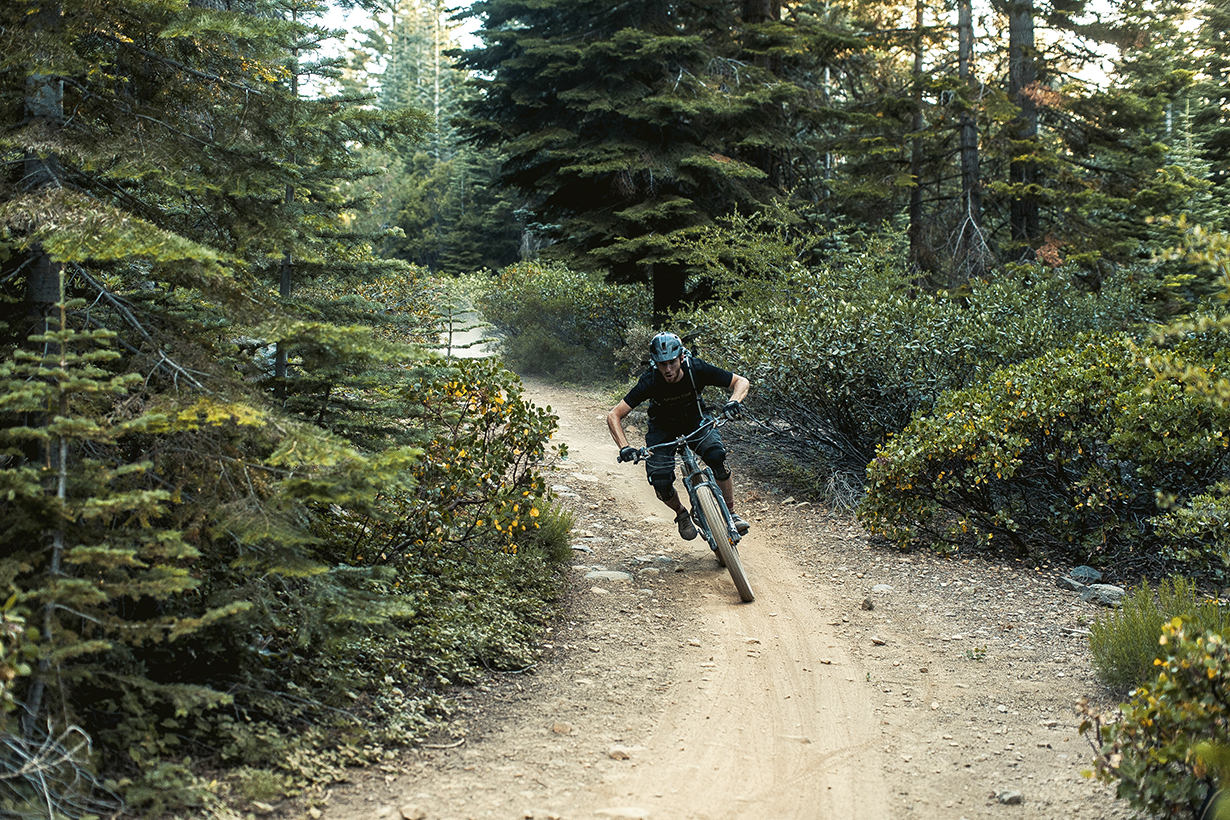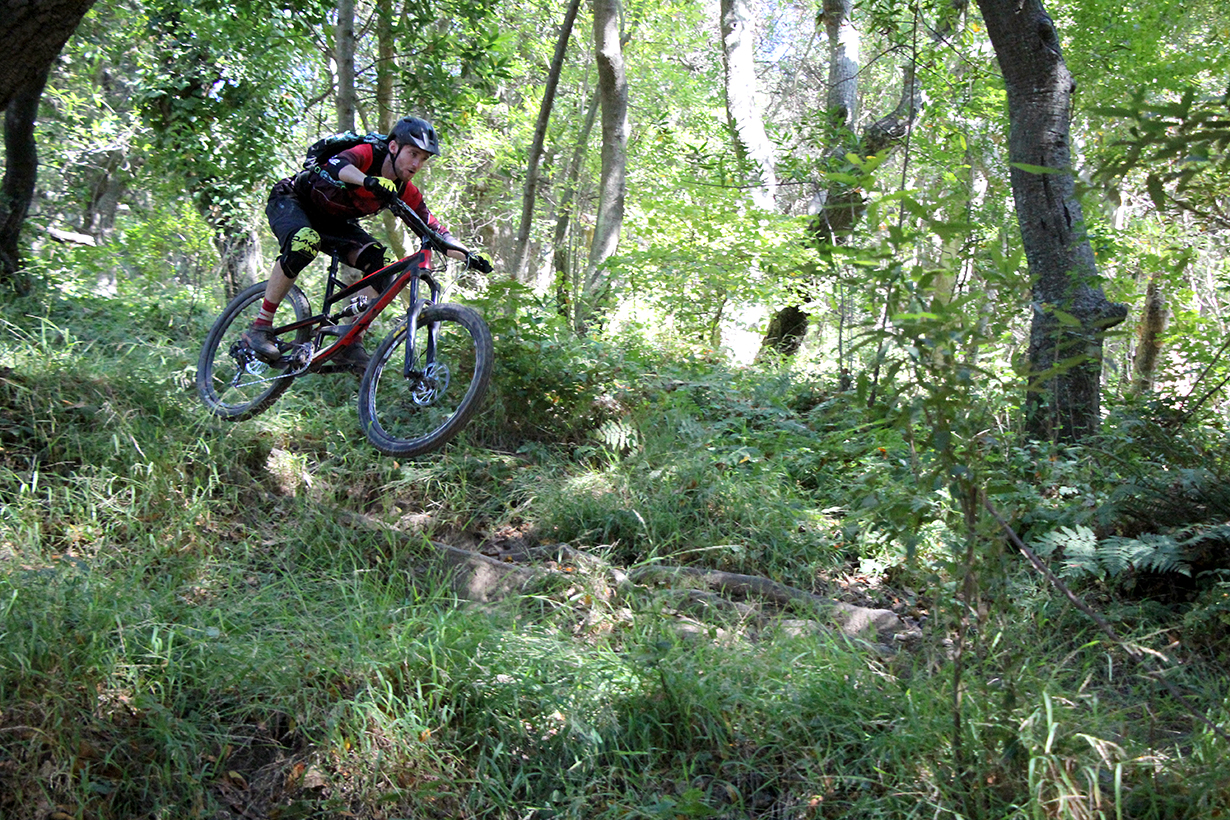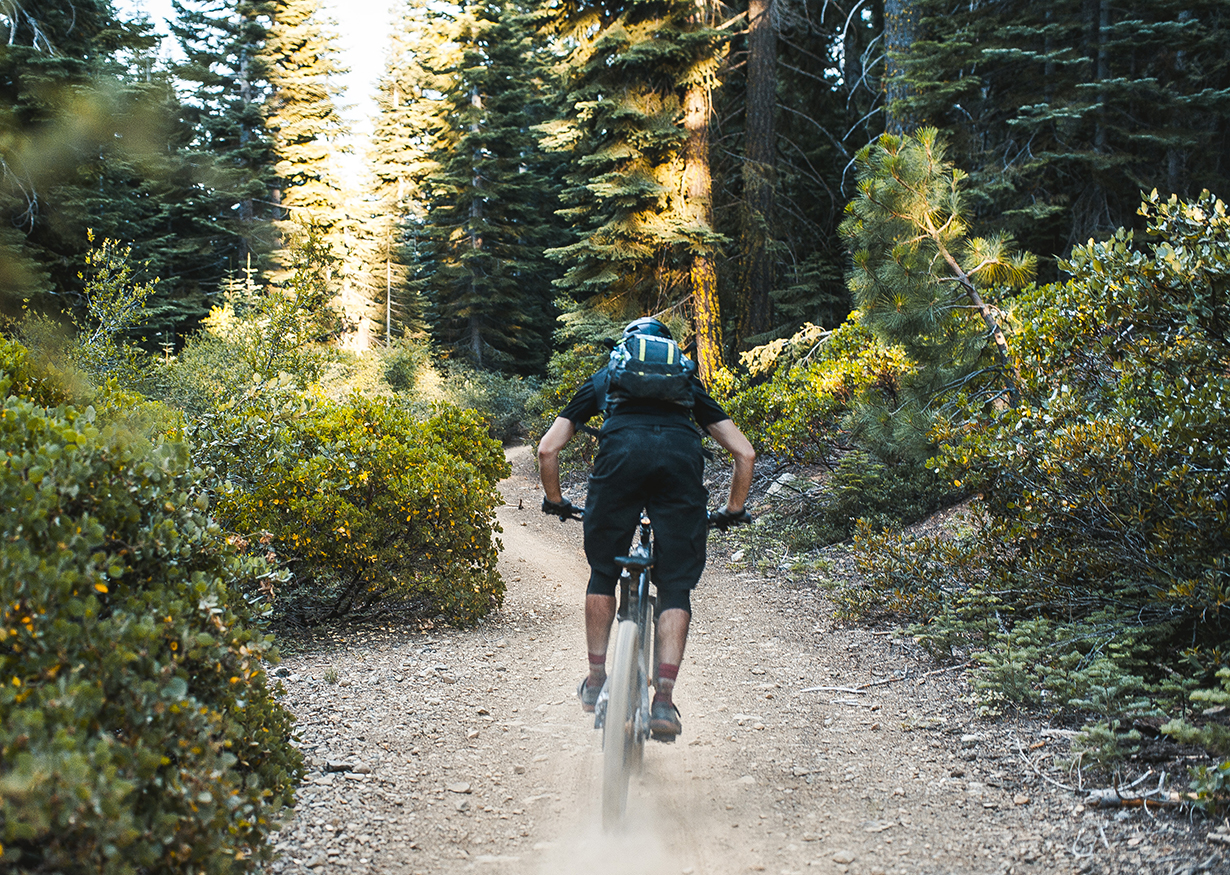
Dakine Drafter 14L pack
Stated Volume: 14 liters
Dimensions: 48 x 30 x 23 cm / 19 x 12 x 9 in
Blister’s Measured Weight: 1240 g / 2.7 lbs
Stated features:
- 3L / 100 oz Hydrapak® lumbar reservoir w/ quick disconnect
- High-flow Blaster bite valve w/shut-off
- Air Suspension backpanel
- DK Impact CE-certified Spine protector compatible (not included)
- Breathable ergonomic shoulder straps
- Full face or trail helmet carry
- Deployable armor carry straps
- Quick stash zippered side pocket
- Fleece lined sunglass/phone pocket
- Internal organizer pockets
- Magnetic hydration hose clip
MSRP: $135
Reviewer: 5’10”, 143 lbs.
Test Duration: 2 months
Test Locations: Tahoe, CA; Colorado Springs, CO
Intro
In the last year, I’ve been wearing a hydration pack less and less, since I’ve found that I can get away with carrying most of my supplies in my pockets, my bibs, or on my bike. But longer rides in variable weather conditions still call for a pack, and a few brands have found ways to make carrying one on longer rides more bearable by improving the breathability and weight distribution of their packs.
The Dakine Drafter — which is available in 10, 14, and 18 liter configurations — seeks to improve long rides by using a breathable mesh back panel and a bladder that puts the majority of weight in the bottom of the pack. I’ve been reviewing the 14 liter Drafter, and I’ve come away very impressed with its well-thought-out design.
Construction
The Drafter is primarily made of a nylon ripstop fabric that has held up well so far. This material seems pretty comparable to the construction of the Osprey Zealot 16, which I’ve used and abused for four years straight with minimal wear.

The only part of the Drafter that looks like it’s at risk of getting damaged is the the mesh back panel, which I could imagine tearing at some point, especially if you’re like me and often carelessly toss your pack on rocks during breaks.
Fit
The Drafter is available in only one back panel size, which should fit most riders. The back is wider at the bottom than the top so the majority of its volume sits at the rider’s hips. The entire pack panel consists of taught mesh, and it is extremely comfortable.
For adjusting the fit, the waist and sternum straps can be tightened or loosened, and the sternum strap can slide up and down the shoulder straps. The shoulder straps can be adjusted below the armpit, but I found myself wishing they were also adjustable above the shoulder to keep the pack from moving around as much.
Storage
The Drafter 14L is outfitted with 3 zippered storage compartments that make organization pretty intuitive. The main compartment at the top lacks organizational slots, so it’s perfect for layers. The lower part of the pack features a compartment with vertical slots that effectively house a hand pump, shock pump, tube, and other accessories. Another nice touch is the expandable outer slot, which can be tightened with two straps to hold more layers, a trail helmet, or thin knee pads.

I think Dakine generally did a good job here, but I would gladly take some more easily-accessible storage. I always appreciate packs with zippered pockets integrated into the waist strap, as I tend to stuff them with a multitool, food, or anything else I’m likely to want to access without having to take off the pack.
Bladder
In order to lower the pack’s center of gravity, the Drafter uses a 3-liter bladder that sits at the very bottom of the pack. I’m a huge fan of this placement, because it really works. This pack can carry as much water as the Osprey Zealot 16, but in seemingly less space. It simply never feels as heavy or as unwieldy as the Zealot 16 when the bladder is full.
What’s more, this bladder nails it in terms of user-friendliness. It can be accessed via a zippered port on the side of the pack, so refilling it doesn’t require unpacking any gear. Additionally, the valved hose can be disconnected from the bladder, even when the bladder is full.
Unlike a lot of bladders, Dakine’s bladder uses a sliding closure system that seals it like an oversized Ziploc bag. This means that it’s really obvious when the bladder is sealed, and you don’t have anything to cross-thread. It’s also makes it easy to add ice to your bladder or clean gunk out. And for those who care about this kind of stuff, I imagine it saves a few grams over a traditional threaded closure system.
Comfort
In terms of comfort, the Drafter’s best feature is its taught mesh back panel. It doesn’t poke you or sit weirdly, and it breathes incredibly well. The same goes for its thin shoulder straps. Being able to feel a breeze through a fully loaded pack is a pretty great feeling, and Dakine gets major props for this design.

The downside to this is that the pack can occasionally feel a little bit disconnected from your back. Particularly on ledgy climbs that I typically tackle with the saddle at full height, the pack can get jostled around a bit. That said, I noticed this a lot less when I was descending, so the tradeoff should be pretty worth it for anyone who needs to use a pack in hot weather.
Durability
I’ll update this review with regards to long-term durability as I continue riding with the Drafter, but for now, I have no issues to report.
Bottom Line
With the Drafter 14L, Dakine has successfully made a pack that is ergonomic and easy to get along with. While I would enjoy a little bit more adjustability and more easily-accessible storage, Dakine has absolutely nailed the most important parts of this pack. It’s breathable, it’s user-friendly, and best of all, it distributes its weight extremely well. If you’re a trail rider who prefers the lighter feel of going packless but need something for longer rides that require more gear, you should check out the Drafter.

wish you had more pictures of the backpanel to substantiate the claim of breating better – they seem hard to find online and is what i’d find most attractive in this pack. its hard to see how it actually works (such as: is there a light frame? pad? is this using cord tension?)
If you go to Dakine’s website or google images, you can see the space between the pack and the user. It’s the same for all the sizes in the Drafter range. There seems to be a fairly rigid plastic insert that keeps the shape of the pack. I just looked at the 10L version yesterday at the local sport shop. The 10L looks small at first but was impressed with how it expanded. The 14L size is hard to find unless you buy directly from Dakine or special order through your local authorized Dakine vendor.
I have had the earlier version of this in use for 2 years or more. The mesh at the back has been completely durable and it’s survived some pretty horrendous crashes too. By far the best pack I’ve ever owned.
Xan, have you tried the new Osprey Raptor 14? And if so, how do these two compare?